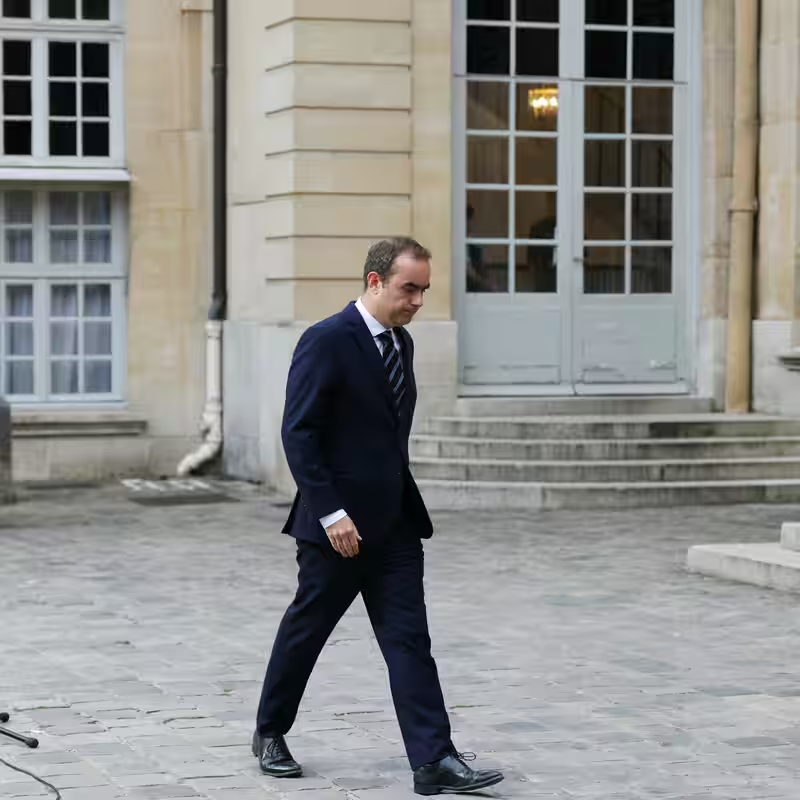Table of Contents
- Macron’s Cabinet Reshuffle: What Changed?
- Bruno Le Maire Takes Defense—A Surprise Move
- Holdovers vs. Newcomers: A Mixed Signal
- Why Stability Is Still in Question
- Political Reactions Across France
- What Comes Next for Macron?
- Sources
Macron Appoints New Cabinet Amid Mounting Doubts
French President Emmanuel Macron unveiled his latest cabinet on Sunday, October 5, 2025—a blend of familiar faces and strategic newcomers. But despite the reshuffle, analysts and opposition leaders remain skeptical about whether this government can deliver the stability France desperately needs .
The Macron cabinet announcement comes at a tense moment: inflation is biting, public trust in institutions is waning, and far-right parties are gaining ground in regional polls. With legislative elections looming and no clear parliamentary majority, many see this new team as more of a temporary fix than a long-term solution.
Bruno Le Maire Moves to Defense—A Bold Pivot
One of the most eye-catching appointments was the shift of Bruno Le Maire, long-time economy minister and centrist stalwart, to the role of defense minister. Le Maire, who has held economic portfolios since 2017, is widely respected for his technocratic competence—but has little direct experience in military or security affairs.
Observers interpret the move as Macron’s attempt to bring steady hands to a volatile portfolio, especially with rising tensions in the Sahel region and ongoing NATO commitments. “Le Maire isn’t a soldier, but he’s a strategist,” said one Élysée insider. “Macron wants discipline, not drama, in defense.”
Holdovers vs. Newcomers: A Cabinet of Contradictions
While Le Maire’s reassignment grabbed headlines, much of the cabinet remains unchanged. Interior Minister Gérald Darmanin and Foreign Minister Catherine Colonna retained their posts—signaling continuity in key areas.
Yet Macron also injected fresh blood, appointing three first-time ministers under 40, including a digital innovation secretary from the tech startup sector and a junior minister for climate resilience with a background in environmental NGOs.
This mix of old guard and new energy reflects Macron’s balancing act: reassure markets with experienced hands while appealing to younger voters disillusioned by traditional politics.
Why the Macron Cabinet Still Faces Doubt
Despite the reshuffle, structural problems remain. France’s National Assembly is deeply fragmented, with no party holding a majority. Macron’s Renaissance party controls only about 25% of seats, forcing him to rely on ad hoc alliances to pass legislation.
Recent polling shows 62% of French citizens believe the government “lacks direction,” and protests over pension reforms and cost-of-living measures continue in major cities. Without a mandate or cohesive coalition, even the most competent cabinet may struggle to govern effectively.
Reactions from Across the Political Spectrum
- Marine Le Pen (National Rally): “This isn’t renewal—it’s rearranging deck chairs on the Titanic.”
- Jean-Luc Mélenchon (France Unbowed): “Same faces, same failures. The people are tired of technocrats.”
- Laurent Saint-Martin (Macron ally): “This cabinet reflects pragmatism in turbulent times.”
What Comes Next for Macron?
With his second—and constitutionally final—presidential term winding down, Macron appears focused on legacy over re-election. The new Macron cabinet will likely prioritize defense modernization, EU fiscal reform, and green industrial policy.
But without public buy-in or parliamentary muscle, even well-intentioned policies could stall. As one political scientist put it: “A cabinet can’t govern alone. It needs a country willing to follow—and right now, France is looking elsewhere.”




